The largest state in the USA is home to the tallest mountain in North America, the country’s largest glacier and its largest national forest. So it’s no surprise there’s a treasure trove of landmarks in Alaska. Being cut off from the mainland and sparsely populated, its remoteness offers visitors a sense of awe and adventure. Nature is the star of the ‘Last Frontier state’. Spectacular sights to discover in the different corners of Alaska include bears catching salmon, whales frolicking in glacial waters, lofty peaks dotting the horizon and incredible scenery.
A trip to the 49th state also unveils the culture and history of this ancient land that has seen both the native tribes and the Gold Rush pioneers eke out their livelihood. From the heavenly Aurora lighting up the night’s sky to hiking, rafting, fishing, and cruising the fjords, Alaska is a bucket list destination for travellers of all kinds. So, here is a list of 20 Alaska landmarks to get you started.
Contents
Alaska Landmarks
Top Tours
- Juneau Wildlife Whale Watching – with Mendenhall Glacier
- Anchorage Wilderness Wildlife Glacier Experience – Best Value
- Arctic Circle and Northern Lights Tour from Fairbanks – a magical experience!
Famous Landmarks in Alaska
1- Anchorage Museum
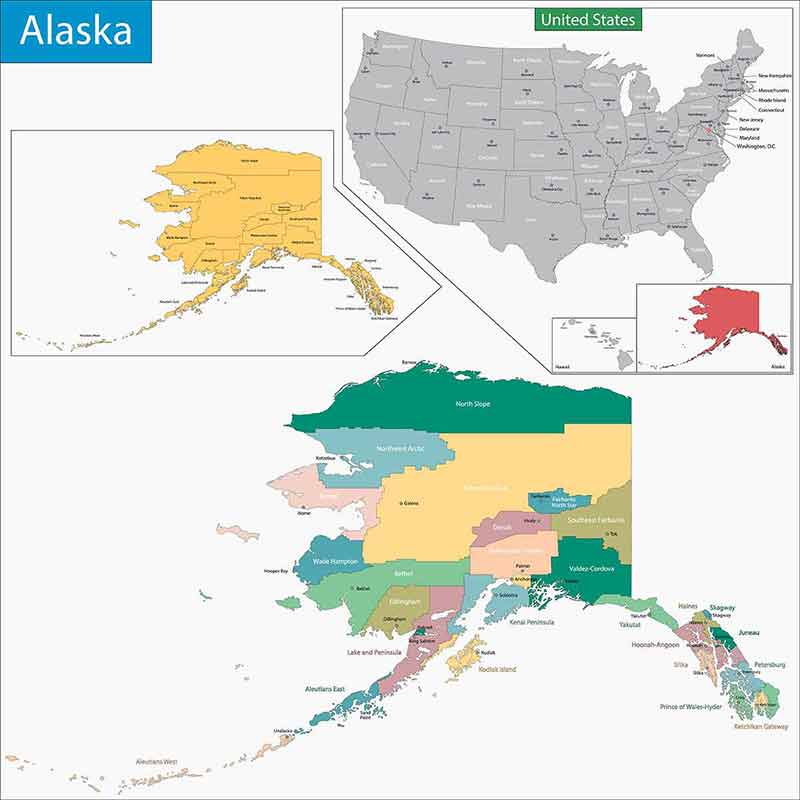
For a quick insight into Alaska’s art, culture, science, ethnology, and history, a visit to Alaska’s largest museum is most helpful.
Anchorage Museum is a 170,000 sq ft (15,800 sqm) Smithsonian affiliate museum located inside a lavish modern structure right at the heart of Anchorage.
Items on display include native culture objects, Alaskan art and interesting multimedia installations on often-overlooked aspects of Alaskan life, such as the relationship between the indigenous people and the landscape.
Anchorage Museum is at 625 C St, Anchorage, AK 99501.
Recommended tours:
2- Arctic Circle
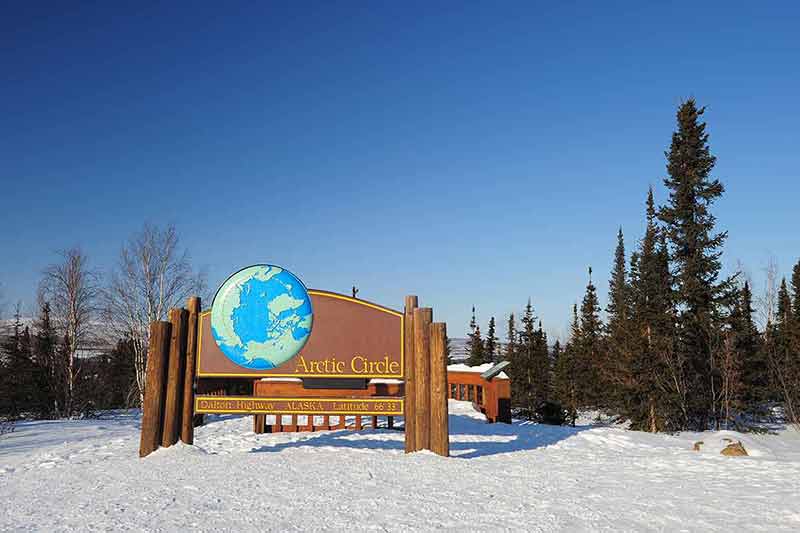
You can’t visit Alaska without checking out the Arctic Circle, as the adventure of venturing into the remote and untamed territory is a unique experience.
The Arctic Circle is easily accessible in Alaska on a 115-mile (185 km) drive on the Dalton Highway.
Besides a road trip, there are other ways of experiencing this unique phenomenon, like flightseeing above the Arctic Circle or going on an Arctic Cruise.
The Arctic is a spectacular permafrost landscape with Arctic animals and indigenous communities.
The Arctic Circle is at latitude 66° 33′ north. There’s a wooden sign on the Dalton Highway at the Arctic Circle Wayside around Milepost 115.
3- Novarupta Volcano
One of the most impressive volcanic eruptions of the 20th century, the Novarupta explosion changed the surrounding landscape affected native settlements and global weather.
Novarupta is a young volcano formed just over a century ago in June 1912.
It was the 20th century’s most voluminous eruption and it put the Katmai region on the world map.
Novarupta is part of the Aleutian volcanic arc, one of the world’s most active volcanic regions.
This chain of volcanoes extends between Alaska and the Aleutian Islands.
There are over 50 volcanoes in Katmai National Park and Preserve.
You hike up to the Novarupta crater and the Valley of Ten Thousand Smokes.
Novarupta Volcano is in Katmai National Park and Preserve.
4- Brooks Falls
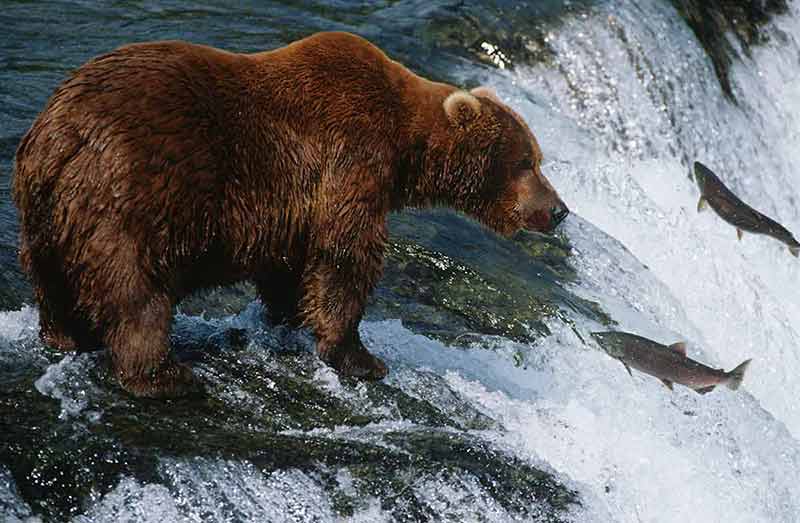
Every summer, one of the most significant wildlife events takes place in the glacially-fed streams of Katmai National Park.
Wildlife lovers and photographers congregate at Brooks Falls to watch the salmon run and the competing grizzlies who appear at the falls around late June and July for a noisy fishing competition.
The spawning salmon leap upstream against the torrent, often into the jaws of the grizzly bears who are waiting to catch a meal.
The scene is awe-inspiring and nature at its best. Large bears can eat more than 120 pounds (55 kg) or around 30 salmon a day.
Only a small number of visitors can watch this spectacular event of nature, so a bit of planning is required to get a live ringside seat at this incredible event. Meanwhile, watch the live cam here.
Brooks Falls is within Katmai National Park and Preserve.
Also read:
- 20 USA Landmarks
- 23 Canada Landmarks
- 22 Ohio Landmarks
- 21 Arizona Landmarks
- 21 Minnesota Landmarks
- 21 Oregon Landmarks
- 21 Illinois Landmarks
- 21 Colorado Landmarks
- 21 Georgia Landmarks
- 21 Michigan Landmarks
- 23 Los Angeles Landmarks
- 21 Washington Landmarks
- 21 Maryland Landmarks
- 20 Manitoba Landmarks
- 20 Kansas Landmarks
- 21 New Mexico Landmarks
- 20 Idaho Landmarks
- 20 Montana Landmarks
- 20 Oklahoma Landmarks
- 21 Wisconsin Landmarks
- 20 Tennessee Landmarks
- 21 Iowa Landmarks
- 20 Alaska Landmarks
- 20 Miami Landmarks
- 21 West Virginia Landmarks
- 21 Kentucky Landmarks
- 20 Louisiana Landmarks
- 21 Arkansas Landmarks
- 20 Cincinnati Landmarks
- 20 San Antonio Landmarks
- 25 Indiana Landmarks
- 21 New York Landmarks
- 20 Texas Landmarks
- 21 Boston Landmarks
- 20 Florida Landmarks
- 20 Hawaii Landmarks
- 5 South Dakota Landmarks
- 21 Pennsylvania Landmarks
- 23 New Jersey Landmarks
- 21 Virginia Landmarks
- 21 North Carolina Landmarks
- 21 Utah Landmarks
- 21 Nevada Landmarks
- 20 Massachusetts Landmarks
- 20 Washington DC Landmarks
- 20 Vermont Landmarks
- 20 Nebraska Landmarks
- 20 North Dakota Landmarks
- 21 Missouri Landmarks
- 20 Rhode Island Landmarks
- 21 Maine Landmarks
- 21 Connecticut Landmarks
- 20 San Diego Landmarks
- 20 Landmarks In South Carolina
- 20 Mississippi Landmarks
- 20 Las Vegas Landmarks
- 20 Dallas Landmarks
- 20 Houston Landmarks
- 20 Seattle Landmarks
Natural Landmarks in Alaska
5- North and South Sawyer Glaciers in Tracy Arm Fjord
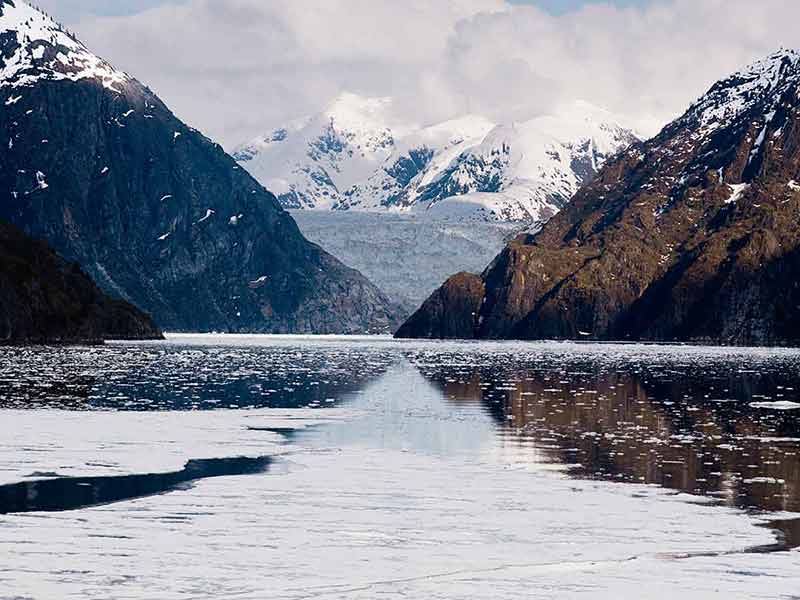
Another natural wonder tucked away 45 miles (72 km) south of Juneau, Tracy Arm Fjord is a breathtaking off-the-beaten-track natural area.
The narrow inlet, dramatic cliffs, tumbling waterfalls and the landscape is home to bears, deer, seals and bald eagles.
The twin glaciers of North Sawyer and South Sawyer are stunning natural landmarks in Alaska to watch displays of calving and spot icebergs, some as high as a three-storey building.
Recommended tour: Juneau Wildlife Whale Watching
6- Harding Icefield
Harding Icefield is one of four major US icecaps and is partly located in Kenai Fjords National Park.
You can visit this 700-mile (1126 km) icy landscape on an 8.2-mile (13 km) round trip hike, with an unobstructed view of the glacier waiting for you at the top.
The trail starts from Exit Glacier and winds through a forest of cottonwood and alder trees and then eventually climbs well above the tree line.
The hike is a strenuous uphill adventure in bear country.
Harding Icefield is in Kenai Fjords National Park near Seward and 126 miles (202 km) south of Anchorage.
Recommended tour: Kenai Fjords National Park Cruise from Seward
7- Denali
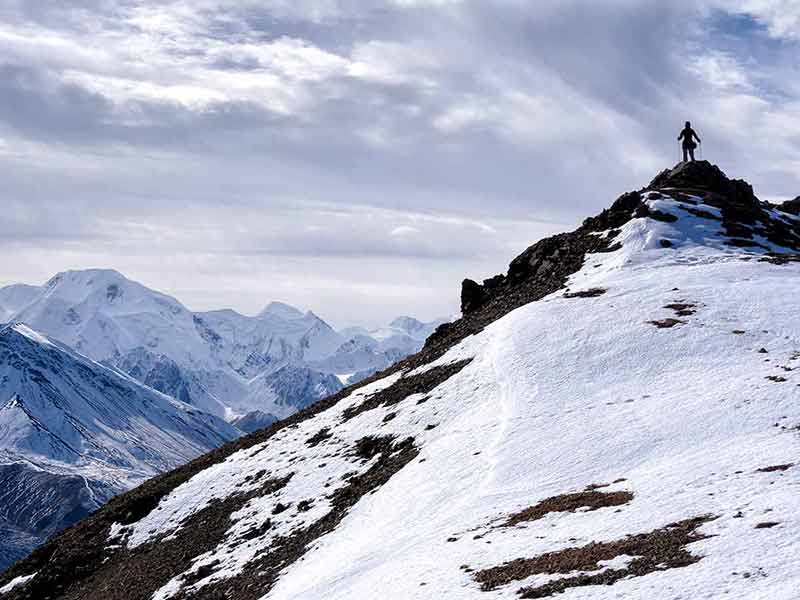
A mountain with two names, former US President Obama changed the name of Mount McKinley to Denali in 2015.
Denali is 20,310 feet (6,190 m) high, making it is the highest mountain in North America and the world’s third most isolated peak.
Denali is part of the Alaska Range in Denali National Park and attracts climbers.
The climb to the summit is treacherous, with extreme weather and many glaciers.
Covering 6 million acres, Denali National Park has plenty of viewing points from which you can enjoy the sight of one of the most stunning natural landmarks in Alaska.
Head to First Denali Viewpoint, Savage River, Polychrome Pass and Eielson Visitor Center but the best spot is Wonder Lake.
Denali is in Denali National Park and Preserve, Parks Hwy.
Recommended tours:
- Denali Experience Flightseeing Tour from Talkeetna
- Denali Peak Sightseeing by Plane
- Denali Canyon Wave
- Denali Park Zipline Adventure
- 2.5-Hour Denali Wilderness ATV Adventure Tour
8- Worthington Glacier
Located in a beautiful valley, Worthington Glacier is one of Alaska’s most road-accessible glaciers and a National Natural Landmark.
Worthington Glacier is on the Richardson Highway, 28 miles (45 km) north of Valdez. There’s an easy walking trail to a viewing deck at the toe of the glacier.
Recommended tour: Wildlife and Glaciers with a walk in the Rainforest
9- St. Elias
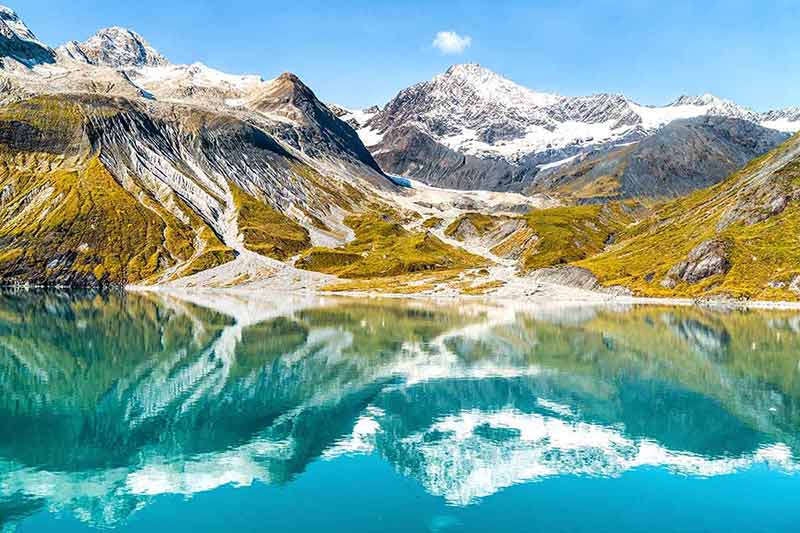
Land of the legendary ‘Sasquatch’ or the ‘Bigfoot’, Mt. St. Elias sits on the border of Alaska and Yukon, shared between the USA and Canada.
It’s the second-highest peak in both the USA and Canada, standing 18,010 ft (5489 m).
The St Elias mountain range is impressive, with many peaks higher than 17,000 feet (5,200 m) and has the world’s largest ice fields outside of the polar ice caps.
Mt. St. Elias is in Wrangell-St. Elias National Park and Preserve.
The park is the largest in the USA and home to nine of the USA’s top 16 highest peaks.
10- Columbia Glacier
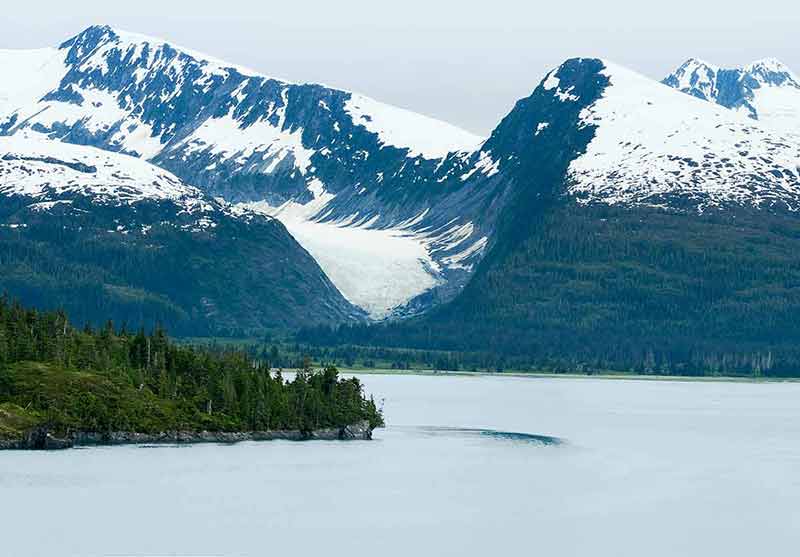
The Columbia Glacier is significant because it’s one of Alaska’s most rapidly changing glaciers and is, unfortunately, retreating.
Since 1980, this natural Alaskan landmark has retreated more than 12 miles (20 km), losing much of its volume.
It tumbles down an icefield 10,000 ft (3,050 m) above sea level along the flanks of the Chugach Mountains and into Prince William Sound.
Originally named Sandwich Sound by James Cook, Prince William Sound has a coastline of fjords, islands and glaciers.
Prince William Sound is a top spot for whale-watching as orcas love the sound. Explore the sound on a cruise, ferry, kayak or flightseeing from Cordova, Valdez and Whittier.
You can also join wildlife viewing tours, camping, fishing, or a cruise to see the famous tidewater glacier.
Columbia Glacier is in Prince William Sound, east of the Kenai Peninsula.
11- Pavlof Volcano
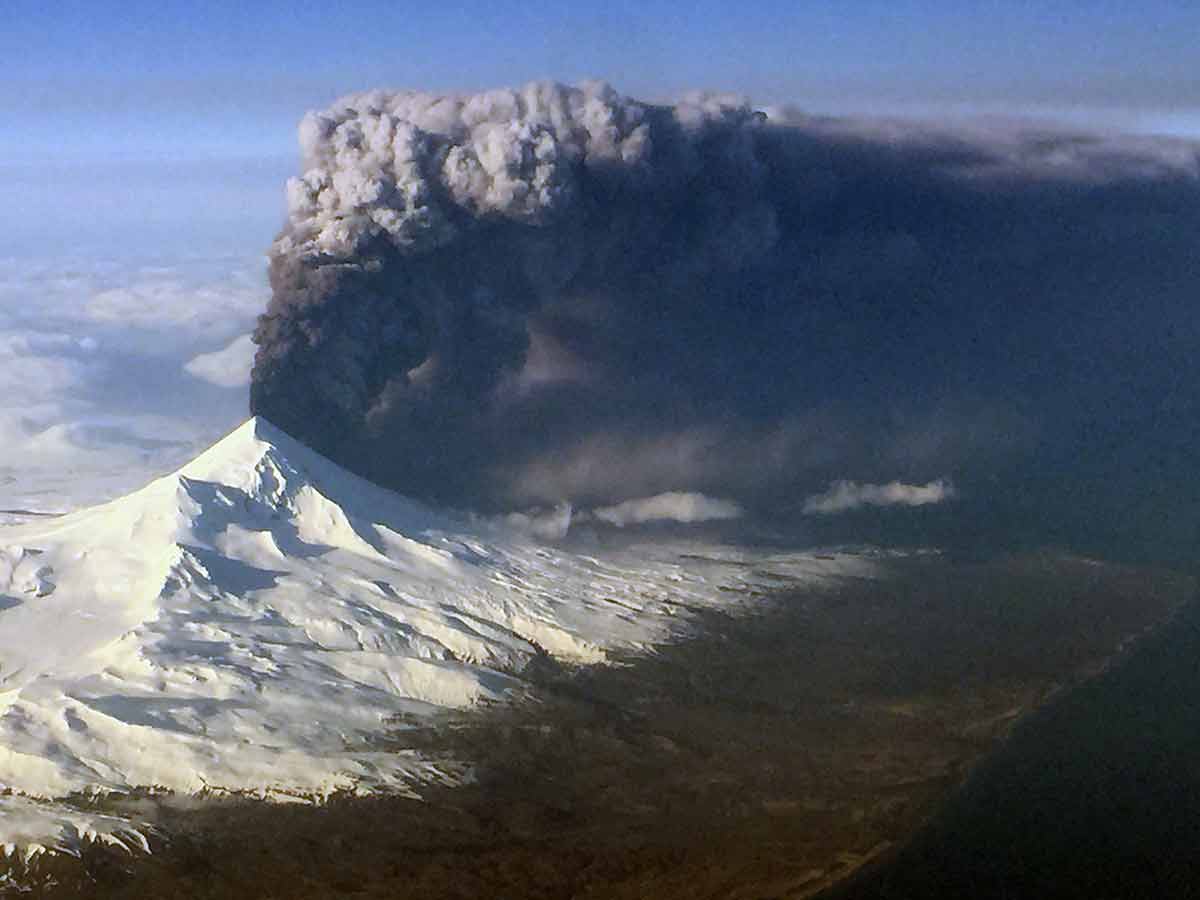
One of the most active US volcanoes in recent times (the last recorded eruption took place in 2016), Pavlof Volcano is a stratovolcano of the Aleutian arc, which is a segment of the Pacific Mountain System.
At 8260 ft (2518 m), it is also one of the tallest volcanoes of Alaska.
With its twin, Pavlof Sister, the two snow-covered cone-shaped peaks are dominant in the surrounding landscape.
Although located only 580 miles (933 km) southwest of Anchorage, getting to this volcano is difficult. Your best chance to catch a glimpse of it is from a ferry.
12- John Hopkins Glacier
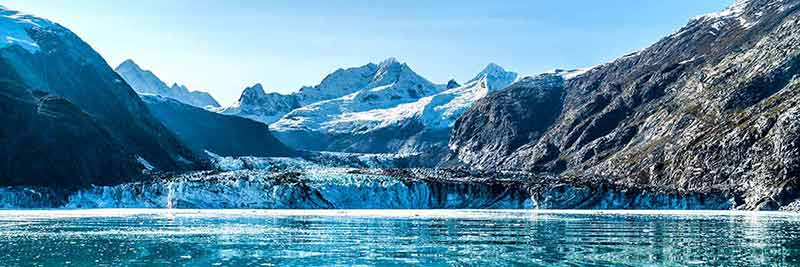
Johns Hopkins Glacier is a 12-mile (19 km) glacier in Glacier Bay National Park, which has around 1045 active glaciers but only seven are tidewater glaciers.
John Hopkins Glacier is the only advancing tidewater glacier on the eastern side of the Fairweather Range.
Sail up Alaska’s beautiful Inside Passage and travel to Glacier Bay by cruise ship.
13- Mendenhall Glacier
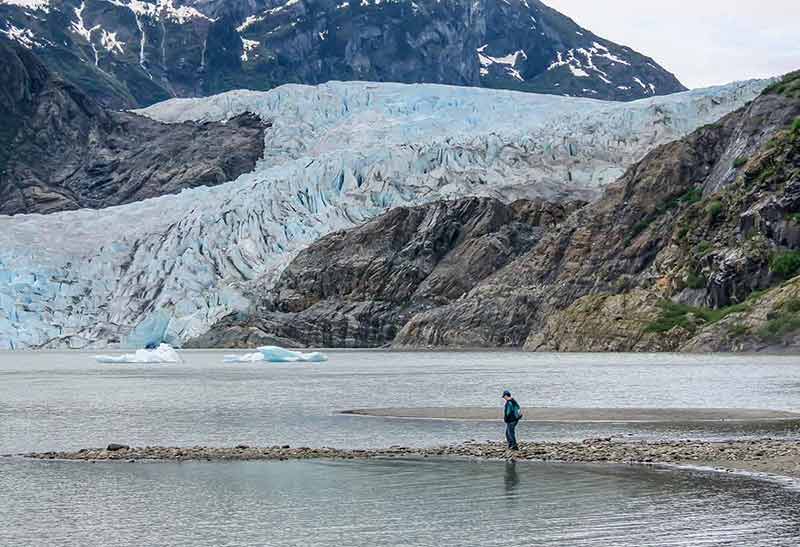
Mendenhall Glacier is not only a stunning natural landmark of Alaska but also easily accessible.
The glacier is 12 miles (19 km) from Juneau and is a 13.6 mile (22 km) long river of ice.
Located in Tongass National Forest, it’s one of the many glaciers in Juneau Icefield.
Mendenhall Glacier Visitor Center offers interpretive programs and you can hike one of its many trails, especially the Nugget Falls trail, to the glacier’s base.
Historical Landmarks In Alaska
14- Totem Bight State Historical Park
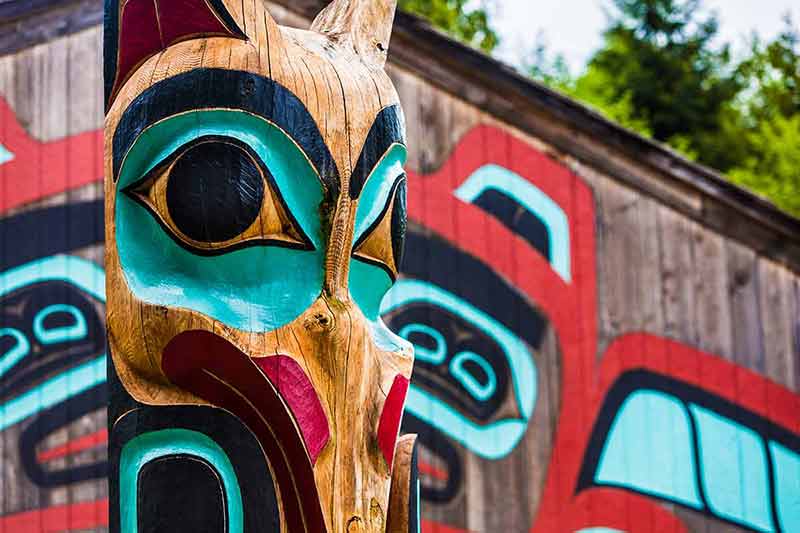
Totem Bight State Historical Park is the result of a U.S. Forest Services program to preserve villages and totem poles left behind by the native people of the area.
Since 1938, these cultural monuments of Alaska have been salvaged and reconstructed.
The totems convey the story of the Tlingit and Haida Indians, with a colourful Clan House in the centre.
Well-marked trails running through the forest have informational displays about the culture and history.
The viewing deck overlooks the Tongass Narrow and offers an outstanding view of the ocean and beach.
Totem Bight State Historical Park is at 9883 N Tongass Hwy, Ketchikan, AK 99901.
15- Castle Hill in Sitka
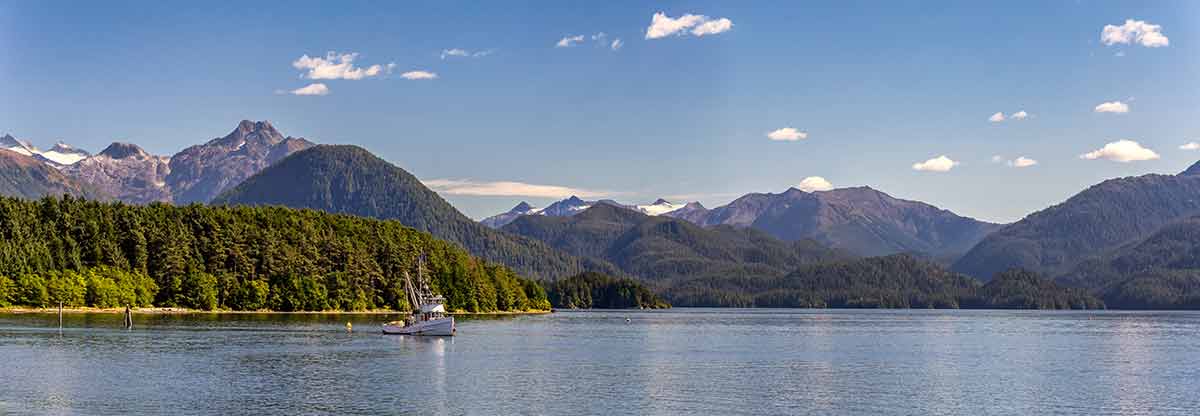
To get a glimpse into Russia’s colonisation of North America at Castle Hill in Sitka.
During the early 18th century, Russia established a presence in North America.
Merchants and fur trappers from Siberia arrived in Alaska in 1732, and the Russian-American Company (RAC) received a charter to hunt for fur in 1799.
Few Russians settled in Alaska and after the Crimean War, Tsar Alexander II decided to sell Alaska to the USA on 18 October 1867.
Castle Hill or Baranof Castle State Historic Site is where Alaska was handed over to the United States in 1867.
There is a scenic walkway to the top of the hill where the ceremony occurred.
It’s also where the 49-star United States was first raised after Alaska became a state in 1959.
This historic landmark of Alaska is at a spot with a lovely view of Sitka and the waterfront.
Baranof Castle State Historic Site is at Sitka, AK 99835.
16- Bering Expedition Landing Site
Kayak Island is the landing site of the first European to set his foot in Alaska.
In 1741, the Bering Expedition arrived at the small island in the Gulf of Alaska.
The Bering Expedition Landing Site is on Kayak Island in the Gulf of Alaska, 100 km (62 mi) SE of Cordova.
17- Fort Abercrombie State Historical Park, Kodiak Island
Fort Abercrombie State Historical Park is a National Historic Landmark significant for its remnants of World War II coastal defence systems, including concrete bunkers and artillery.
You will find a pair of 203-millimeter Mark VI guns capable of blasting serious 240-pound (109 kg) shells 20 miles (32 km) offshore in the park.
Fort Abercrombie was built to defend Alaska from a Japanese attack.
Fort Abercrombie State Historical Park is at Miller Point, Kodiak, AK 99615.
18- Klondike Gold Rush National Historical Park, Skagway
Klondike Gold Rush National Historical Park is the place to discover the history of the 19th century Klondike Gold Rush.
After gold was discovered in 1896 in Bonanza Creek (near Dawson City in the Yukon Territory), Skagway and Dyea received more than 40,000 gold rush stampeders heading to the goldfields in the Yukon via the Chilkoot Trail.
The park includes a six-block historic district in Skagway, the ghost town of Dyea, and the Chilkoot and White Pass Trails.
The Visitor Center at the White Pass & Yukon Route depot is a landmark to start exploring.
Klondike Gold Rush National Historical Park is at 291 Broadway, Skagway, AK 99840.
19- Alaska Railroad
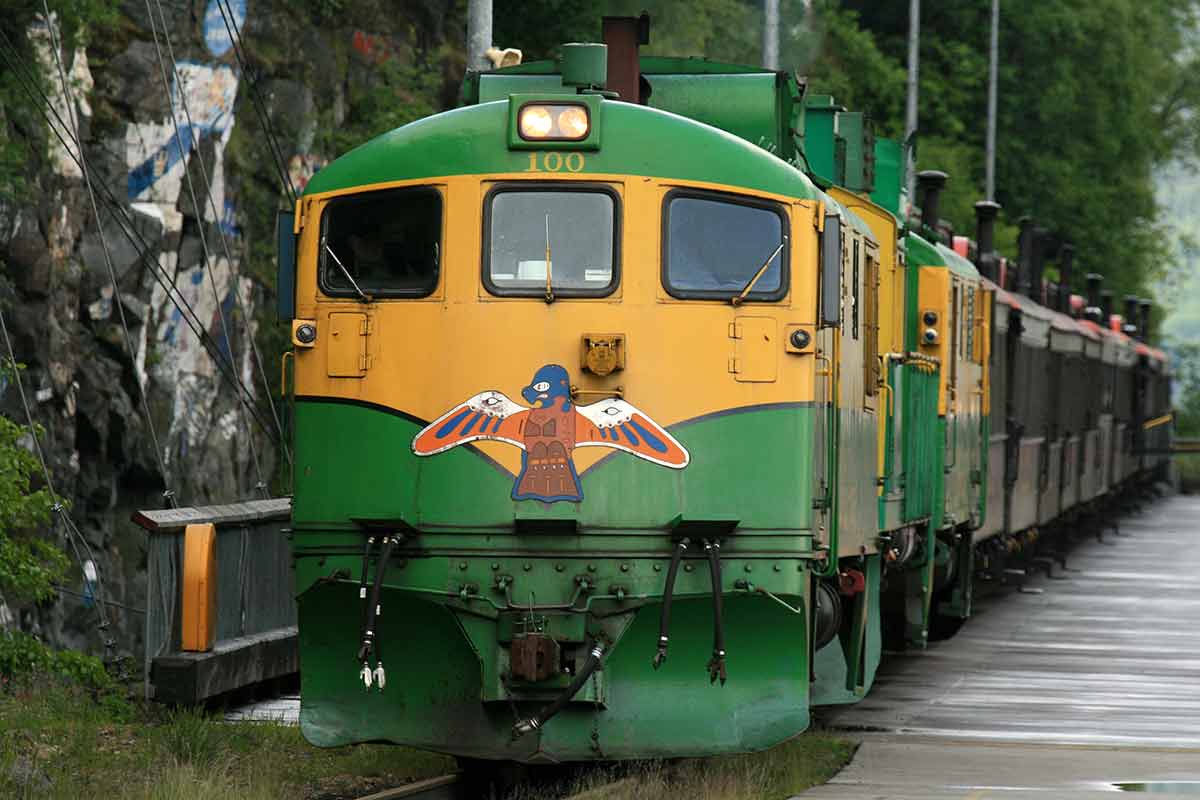
The Alaska Railroad is a historic 470-mile (750 km) railway between Seward and Fairbanks.
Before roads were built, the Alaska Railroad connected the two largest cities in Alaska for five decades.
The train travels through the rugged Alaskan wilderness, crossing rivers and stunning landscapes of mountains and valleys.
The most famous trip is aboard the Denali Star between Anchorage and Fairbanks, which travels along the Alaska Range and skirts Denali National Park.
Recommended tour: Wilderness Dog Sled Ride and Tour in Seward
20- Kennecott Mines
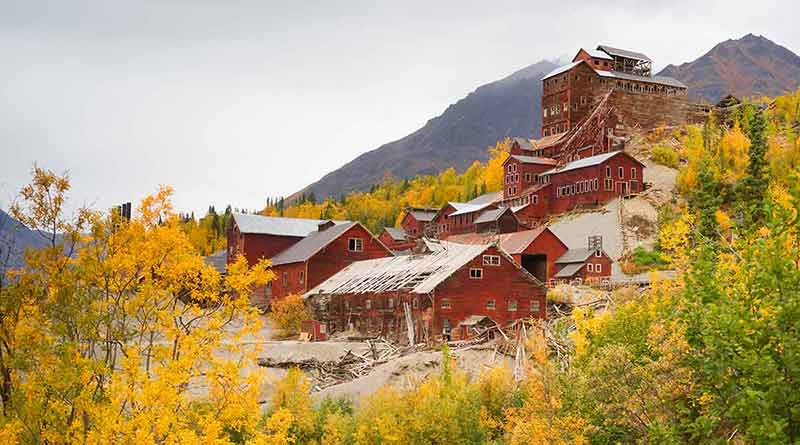
Kennecott Mines is a unique historical landmark of Alaska, located within Wrangell-St Elias National Park and Preserve.
The historic copper mine that shut down in 1938 and is a National Historic Landmark District, where you can join a fascinating walking tour of the ghost town’s mills and other buildings.
The beauty of the setting is mesmerising as the unique contrast between the old historic structures and the surrounding mountain panorama is breathtaking.
For more about Alaska read:
Plan Your Trip

Rent A Car – Find the best car rental rates at Discover Cars. They compare car hire companies to provide you with the best deal right now.

Find A Hotel – If you’re curious about this article and are looking for somewhere to stay, take a look at these amazing hotels.





